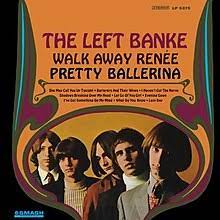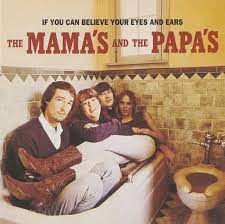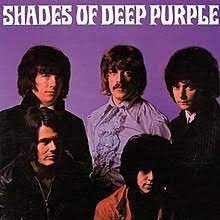Tutorial Pricing: $3.25ea OR any 10 for $10
(use code "Any10410" at checkout)
Paid Requests for $25ea
(comes with any 8 freebies -> so 9 for $25)
100's Of Free Demos & Chord Sheets
Songs Of The Byrds
On The Acoustic

Welcome to my songs of The Byrds page where you'll find songs from The Byrds you can easily learn on the acoustic guitar.
You'll find free demos, sample videos, chord sheets, rhythm tips and more. If you require a full instructional video tutorial you can get one for a small fee. Discount pricing listed above.
Jump menu to quickly access the artists on this page.
Songs Of The Byrds
Chords, Samples, Demos, Tutorials
1. Chimes Of Freedom
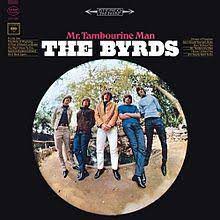
Chimes of Freedom is a song written by Bob Dylan in 1964, and it was first released on his album "Another Side of Bob Dylan." The song is a tribute to the freedom fighters and the oppressed, and it has been interpreted as a protest against the Vietnam War and the civil rights movement.
The Byrds recorded their version of the song in 1965 for their third album, "Fifth Dimension." The Byrds' version of the song features their signature jangly guitars and tight vocal harmonies. The song was released as a single, but it failed to chart.
The Byrds' version of "Chimes of Freedom" has been praised for its arrangement and production, and it is often cited as one of the band's best recordings. The song has also been covered by many other artists, including Bruce Springsteen, The Turtles, and The West Coast Pop Art Experimental Band.
Overall, "Chimes of Freedom" is considered one of Bob Dylan's greatest songs, and it remains a powerful anthem of hope and freedom.
Play a down down up down up down up and repeat rhythm pattern here but no lead required in standard tuning. For chords you'll need a G, C, Em, D and an Am.
Jump To Top
2. Hickory Wind
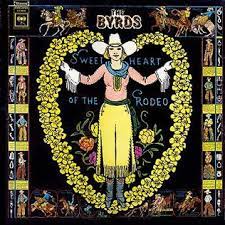
Hickory Wind is a song written by Gram Parsons and Bob Buchanan, and it was first recorded by The Byrds in 1968 for their album "Sweetheart of the Rodeo." The song is a wistful, melancholy ballad about homesickness and longing for a simpler way of life.
The song is notable for its simple and elegant melody, as well as for its evocative lyrics. The opening lines of the song, "In South Carolina, there are many tall pines / I remember the oak tree that we used to climb," set the tone for the rest of the song, which is filled with vivid imagery of the rural South.
The Byrds' version of "Hickory Wind" is characterized by the use of pedal steel guitar, which gives the song a mournful, country-inflected sound. The song has been covered by many other artists, including Emmylou Harris, Gillian Welch, and Ryan Adams.
"Hickory Wind" has come to be seen as one of Gram Parsons' signature songs, and it is often cited as a classic example of country-rock. The song's poignant lyrics and timeless melody have ensured that it remains a beloved favorite of both Byrds and Parsons fans alike.
The three chords here are G, C and D in standard tuning and some lead work. Play a root down up down up and repeat rhythm pattern.
Jump To Top Of Songs Of The Byrds
3. I'll Feel A Whole Lot Better
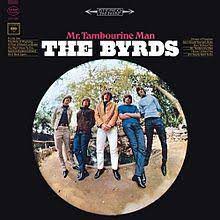
I'll Feel a Whole Lot Better is a song written by Gene Clark, who was a founding member of The Byrds. The song was first released on the band's debut album, "Mr. Tambourine Man," in 1965.
The song is a classic example of the jangly guitar-driven folk rock sound that The Byrds helped popularize in the mid-1960s. The song's upbeat tempo, chiming 12-string guitar, and catchy melody make it a standout track on the album.
Lyrically, the song is about a relationship that has ended badly, with the narrator expressing his desire to move on and find someone new. The song's refrain, "But I'll feel a whole lot better when you're gone," has become one of the most memorable lines in the band's catalog.
"I'll Feel a Whole Lot Better" was released as a single in 1965, but it failed to chart. However, the song has since become one of The Byrds' most popular and enduring tracks, and it has been covered by numerous artists over the years, including Tom Petty and the Heartbreakers, The Bangles, and Yo La Tengo.
Overall, "I'll Feel a Whole Lot Better" is a classic example of the sunny, melodic sound of mid-1960s folk rock, and it remains a beloved favorite of Byrds fans and music lovers alike.
This one has an arpeggio pattern throughout with a cap 2nd fret but no lead work. For chords you'll need a C, G6, Am, Am/G, Am/Gb, Am/F and a D/Gb.
Jump To Top
4. Mr Spaceman
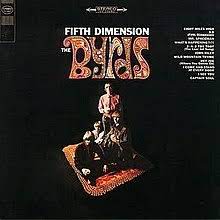
Mr. Spaceman is a song written by Jim McGuinn (later known as Roger McGuinn) and was released by The Byrds in 1966 as a single and later included on their album "Fifth Dimension." The song features a humorous, science fiction-inspired theme, which was a departure from the more serious tone of much of the band's earlier material.
The song's lyrics tell the story of an encounter between the narrator and an extraterrestrial visitor who arrives in a spaceship to observe life on Earth. The narrator invites the spaceman to come down and take a closer look, but the spaceman declines, citing the strange behavior and hostility of the Earthlings.
Musically, "Mr. Spaceman" features a bright, upbeat melody and catchy sing-along chorus. The song's instrumentation includes twangy electric guitar, spacey sound effects, and a driving beat.
"Mr. Spaceman" was a minor hit for The Byrds, reaching #36 on the Billboard Hot 100 chart. The song has since become a fan favorite and is often cited as one of the band's most whimsical and lighthearted tracks. The song has also been covered by a number of other artists, including The Lemonheads and The Minus 5.
Overall, "Mr. Spaceman" is a catchy and playful example of The Byrds' eclectic and innovative approach to pop music in the mid-1960s.
Some lead required here with a root down root up down up and repeat rhythm pattern with the chords G, A7, D, C, G6 and an Am.
Jump To Top
5. Mr Tambourine Man
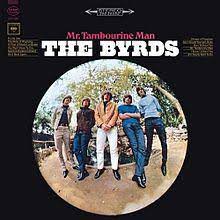
Mr. Tambourine Man is a song written by Bob Dylan and famously covered by The Byrds in 1965. The song was a critical and commercial success, and it helped establish The Byrds as one of the most innovative and influential bands of the mid-1960s.
The song's lyrics are abstract and surreal, featuring a narrator who pleads with a mysterious "Mr. Tambourine Man" to take him on a journey through an ethereal landscape. The lyrics are widely interpreted as a metaphor for drug use or a call for artistic inspiration.
The Byrds' version of "Mr. Tambourine Man" features a distinctive jangly guitar sound, which became a hallmark of the band's style. The song also features complex vocal harmonies and a melodic arrangement that emphasized the song's dreamy, otherworldly quality.
The song was a massive hit for The Byrds, reaching #1 on the Billboard Hot 100 chart in 1965. The success of the song helped launch the folk rock movement, which combined the acoustic instrumentation and lyrical themes of traditional folk music with the electrified sound of rock and roll.
"Mr. Tambourine Man" has since become a classic of both the folk and rock genres, and it has been covered by numerous artists over the years, including The Grateful Dead, Bruce Springsteen, and The Byrds' own Roger McGuinn.
Overall, "Mr. Tambourine Man" is a seminal song that helped define the sound and spirit of 1960s rock and roll, and it remains a beloved favorite of music fans around the world.
Only three chords here and they are D, A and a G with just some lead in the beginning and end and played in standard tuning. For rhythm play a root up down up root up down up and repeat pattern.
Jump To Top
6. Turn Turn Turn
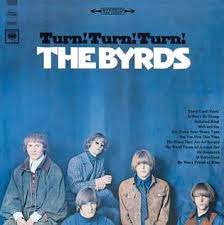
Turn! Turn! Turn! (To Everything There Is a Season) is a song based on a passage from the Bible's Book of Ecclesiastes. The song was written by Pete Seeger in the late 1950s and first recorded by the folk group The Limeliters in 1962. The most famous version of the song, however, was recorded by The Byrds in 1965 and became a hit single.
The song's lyrics, which are taken directly from the Book of Ecclesiastes, describe the cyclical nature of life and the inevitability of change. The song's memorable chorus, "To everything (turn, turn, turn) / There is a season (turn, turn, turn)" has become one of the most famous refrains in popular music.
Musically, The Byrds' version of "Turn! Turn! Turn!" features the band's signature jangly guitar sound and tight harmonies. The song's arrangement is relatively faithful to Seeger's original, although The Byrds' version includes a guitar solo and a more rock-oriented rhythm section.
The song was a commercial success for The Byrds, reaching #1 on the Billboard Hot 100 chart in late 1965. The song's message of hope and resilience in the face of change has made it a popular and enduring favorite, and it has been covered by many other artists over the years, including Bruce Springsteen and Dolly Parton.
Overall, "Turn! Turn! Turn!" is a timeless and inspiring song that speaks to the human experience in a way that continues to resonate with audiences more than half a century after its initial release.
Some lead in this number in standard tuning while playing a root down up root up down up and the use a rake pattern using a root down up root up down up in the chorus sections. The chords here are D, G, D/Gb, A7 and an Em.
Jump To Top Of Songs Of The Byrds
Thank you for visiting my songs of The Byrds page and I hope you found some useful and helpful info here.
If you liked this songs of the Byrds page, you might also like ... (click images)
Popular Songs From The 60s
